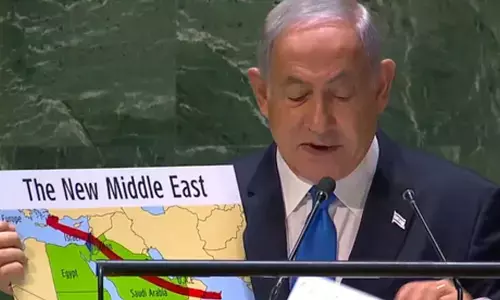India: Driving force of Global Solar Alliance

The International Solar Alliance (ISA), a joint effort between India and France for increased deployment of solar energy technologies to bring energy security/access is growing in strength
The International Solar Alliance (ISA), a joint effort between India and France for increased deployment of solar energy technologies to bring energy security/access is growing in strength. This past December Romania officially joined the ISA as its 118th member country signalling a robust commitment to advancing solar energy and contributing to global climate action. Incidentally, Romania was one of the first countries to export oil.
The ISA is one of the first international intergovernmental organisations to have its headquarters in India. It is partnering with multilateral development banks (MDBs), development financial institutions (DFIs), private and public sector organisations, civil society, and other international institutions to deploy cost-effective and transformational solutions through solar energy, especially in the Least Developed Countries (LDCs) and the Small Island Developing States (SIDS).
The ISA, established during the Conference of Parties (COP21) in Paris, has been at the forefront of advancing solar energy initiatives globally. All the 193 member countries of the United Nations can join the ISA. According to ISA, its mission is to unlock $1 trillion of investments in solar by 2030 while reducing technology and its financing costs and promotes the use of solar energy in the agriculture, health, transport, and power generation sectors.
It is partnering with multilateral development banks (MDBs), development financial institutions (DFIs), private and public sector organisations, civil society, and other international institutions to deploy cost-effective and transformational solutions through solar energy, especially in the Least Developed Countries (LDCs) and the Small Island Developing States (SIDS).
ISA Member Countries are driving change by enacting policies and regulations, sharing best practices, agreeing on common standards, and mobilising investments. The ISA has improved access to finance by reducing the risks and making the sector more attractive to private investment; increased access to solar training, data and insights for solar engineers and energy policymakers.
With the formation of ISA and increased focus on the renewable energy sector, India is positioning itself as a leader in the sector. India is considering a $25 million investment as capital contribution in the Global Solar Facility (GSF), the $35 million payment guarantee fund formed by ISA to stimulate investments into solar power projects. The ISA will contribute $10 million to the GSF and Bloomberg Philanthropies and CIFF have also committed their support. The target for the GSF is to raise $100 million.
The GSF is designed to catalyse solar investments in underserved segments and geographies across Africa, unlocking commercial capital in the process, said ISA.
According to Ajay Mathur, Director General, ISA, the world requires an investment of $12.5 trillion in renewable energy and $23 billion in off-grid solar by 2030. The ISA through its GSF is stepping up as current global solar investment falls woefully short, constituting only 10 per cent of the required amount for achieving net-zero emissions. According to Mathur, there is a profound disparity in investments — with developing countries, home to over 50 per cent of the global population, receiving just 15 per cent of 2022’s renewable energy investments. Sub-Saharan Africa’s per capita renewable energy investment has plummeted by 44 per cent from 2015 to 2021.
In stark contrast, investments in North America are 41 times higher, and in Europe, they are 57 times greater. The GSF will further our vision of addressing the urgent need for universal energy access and a clean energy transition, Mathur said.
Meanwhile, a unique blend of tradition and modernity, the hamlet of Modhera, nestled in the heart of Gujarat, has carved its name in history by becoming India’s first solar-powered village. This initiative, which caught global attention, is a significant stride towards achieving a harmonious balance between progress and environmental conservation. Prime Minister Narendra Modi highlighted the village’s distinction as the first in the nation to enjoy round-the-clock solar power.
Set up with an investment of $9.7 million, the solar project in Modhera is a testament to the collaborative efforts of the Union Government and the Government of Gujarat. This ambitious project has equipped the village with excess renewable energy, setting a sustainable template for others to follow. As UN Secretary-General António Guterres noted, Modhera is a symbol of “reconciliation between humankind and the planet.”
According to CRISIL Market Intelligence & Analytics, the targeted one crore rooftop solar installation under the Pradhanmantri Surydaya Yojana is expected to add 20-22 GW of a solar power capacity addition at an investment of Rs 91,000-110,000 crore and lift the overall installed base to 31-33 GW from 11 GW as of December 2023.
If fully implemented, 80-85 per cent of the overall government target of 40 GW in rooftop solar installation could be achieved largely powered by residential rooftop solar, CRISIL Market Intelligence said. The installed base of residential rooftop solar power will go up by eight per cent by the end of the scheme from the current 2.65 GW, CRISIL Market Intelligence report added.
With the finer details not yet out, based on the current details of financial assistance, the incremental investments will need government subsidies worth at least Rs 35,000 crore over the scheme period, CRISIL Market Intelligence said.














